
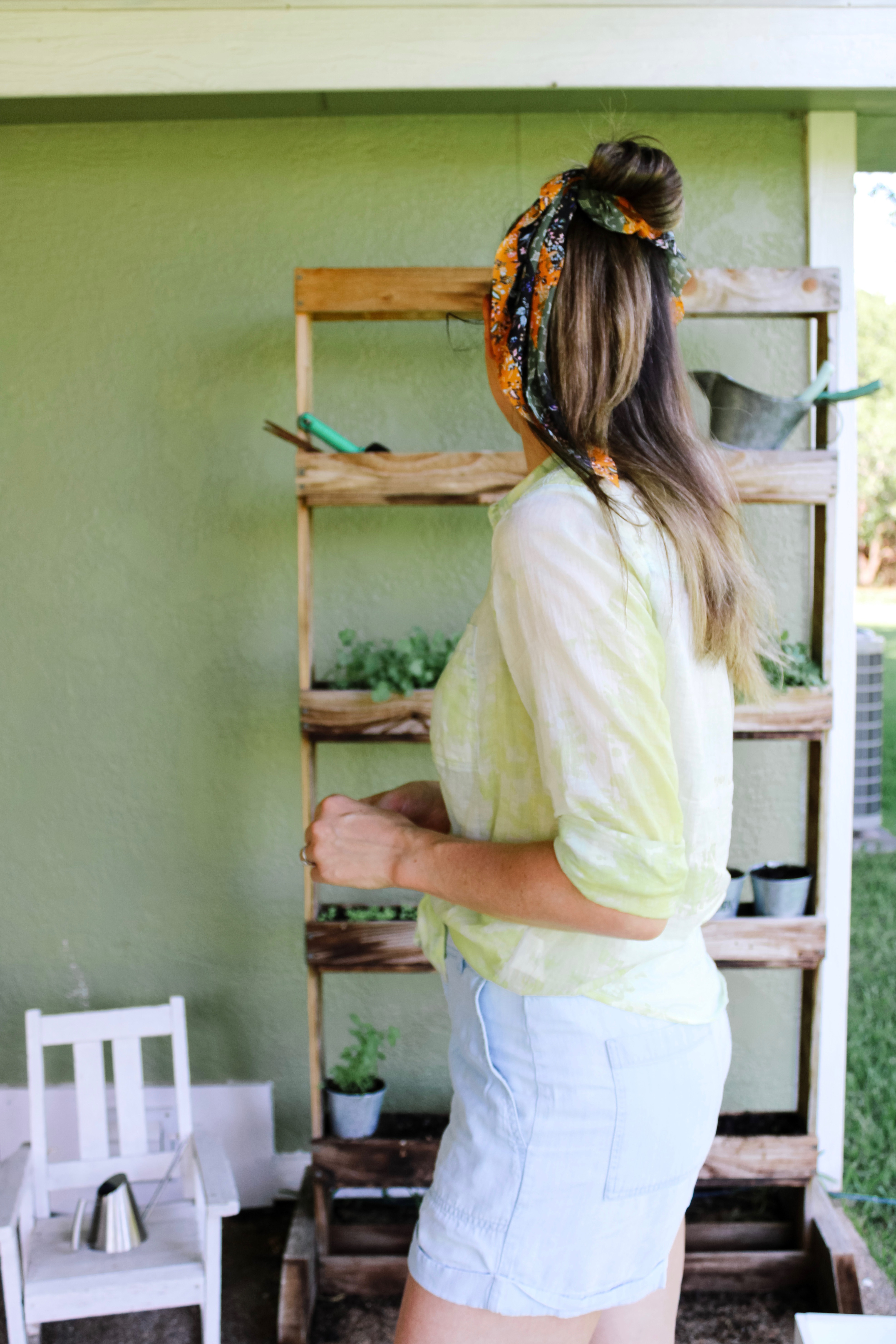
Gardening can be both satisfying and therapeutic.
It allows you to create something from nothing, nurture and grow living things, get your hands a little dirty, work hard and watch your responsibility turn into reward.
Gardening herbs at home can make cooking flavorful and convenient.
If you’re using a raised planter, remember to water a little more frequently. These plants won’t get any moisture from the ground so the herbs dries out faster. Prune your new plants once every couple of weeks (or as needed for cooking purposes).
Here are a few herbs you can easily grow this time of year:
spinach
This plant helps restore energy, increase vitality, and improve the quality of our blood. Spinach plants take about 4 light soakings per week and need full sun. You can order seeds here. Spinach can be eaten raw, on sandwiches, pizzas, in salads, and inside smoothies.
kale
Kale is high in nutrients and low in calories. Because we eat the actual leaf, it can be planted in just about anything! You can easily buy seeds and plant them just below the surface. If you plant them too deeply, they won’t grow as well. You can use potting soil if you’re growing them inside of planters. If you plant the seeds directly into the ground, you need to use fertilizer to promote growth. Kale can be eaten in a variety of ways. Zuppa Toscana soup is tasty garnished with fresh kale. You can wilt kale in a skillet with garlic and olive oil and serve it as a side dish. Kale can also be eaten raw in salads and smoothies.
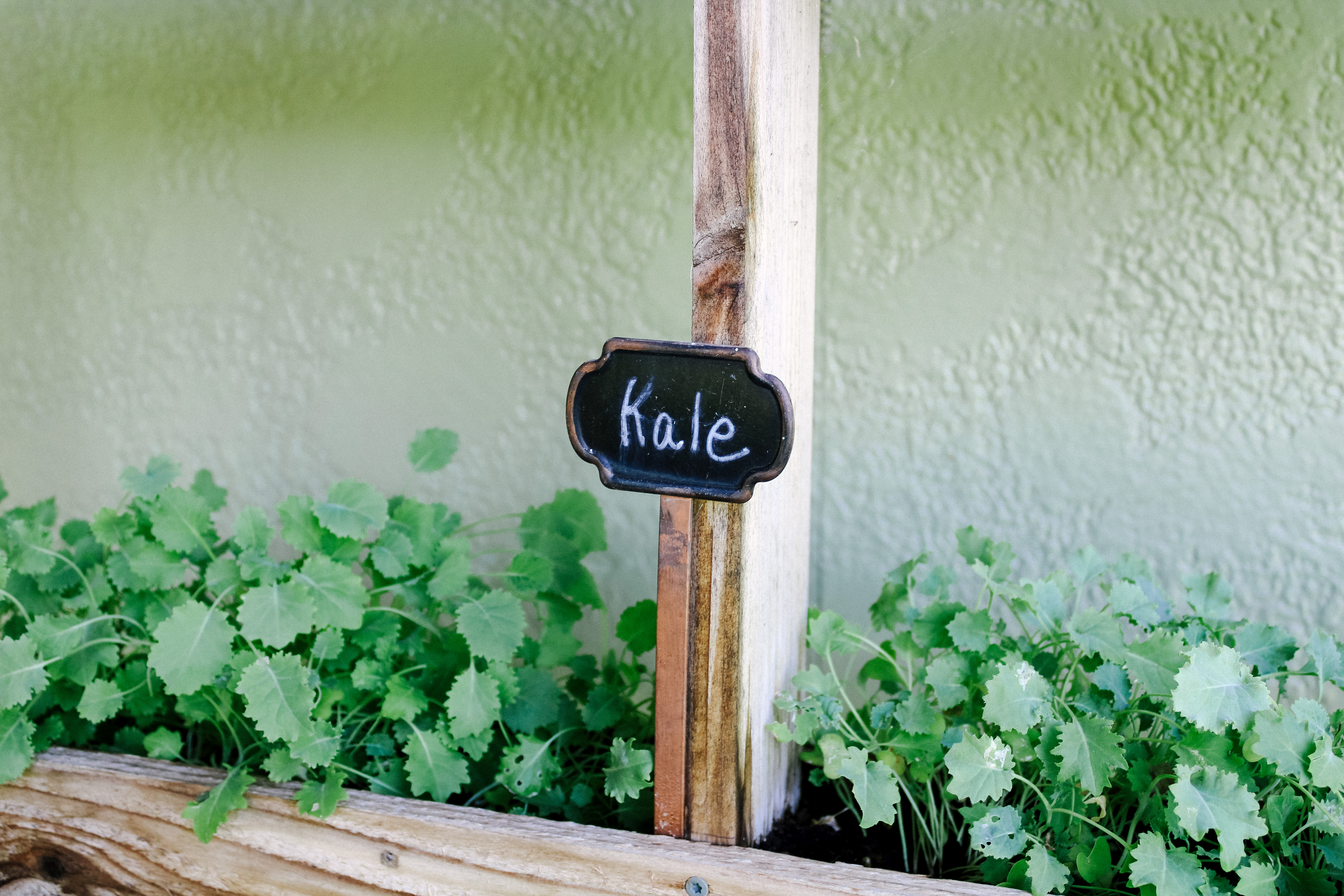
english lavender
This plant can be used to add fragrance in the kitchen, as well as, provide a calming environment and lower levels of anxiety for guests or yourself. The soil needs to be moist when planting seeds and they need full sun. It needs space to “crawl” so it should be in a hanging planter or in a raised planter. English lavender can be infused in tea or water. It can also be crushed with a mortar and pestle and let it dry out and put it in a sachet under your pillow for relaxation and deep sleep.
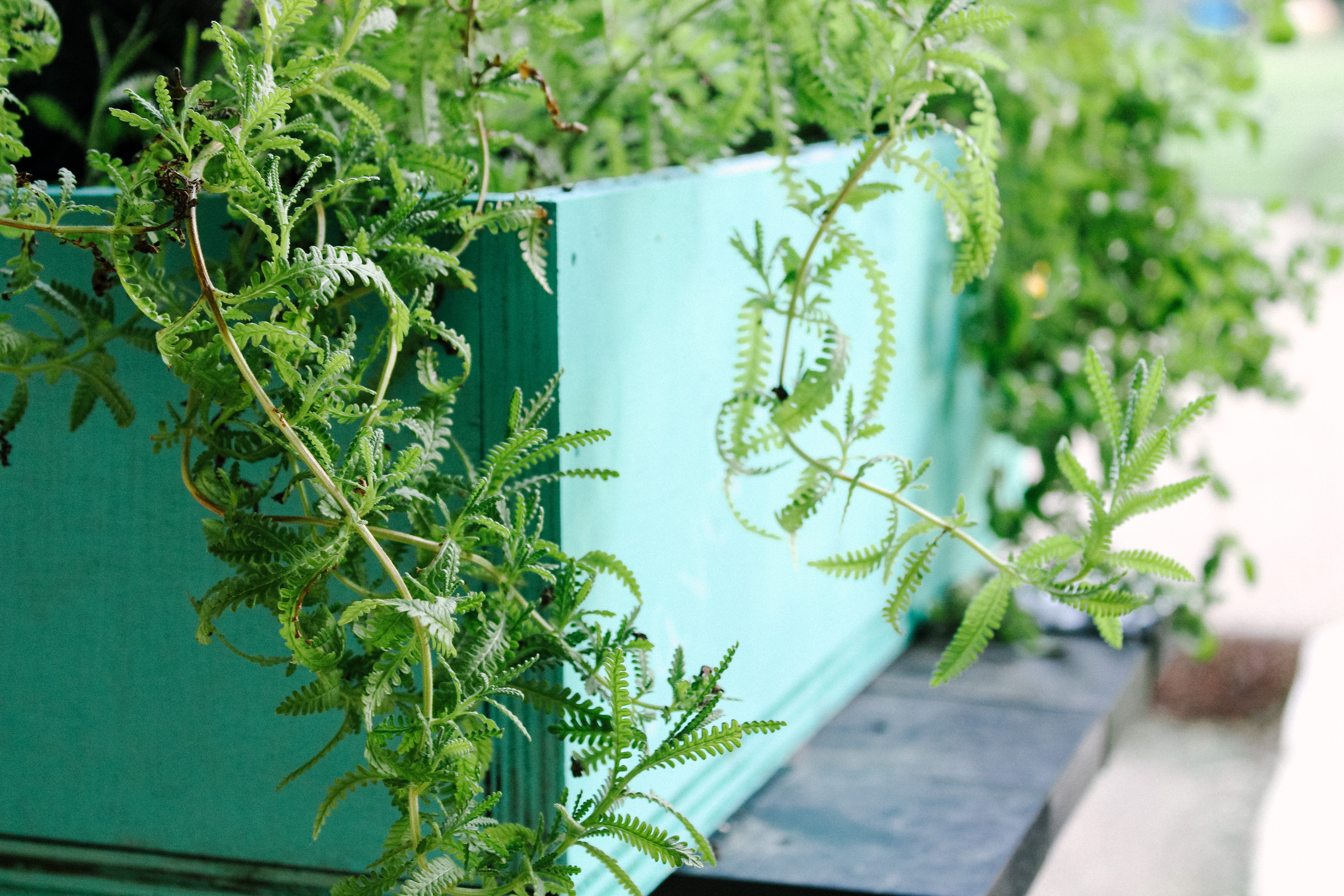
english thyme
This herb is a good source of vitamin c, fiber, iron and vitamin a. Plant seeds in well-drained soil about 1 inch deep. Water 2 times a week because the soil doesn’t need to be moist for this herb. English Thyme can be cooked or garnished with a variety of things: eggs, tomatoes, soup, fish, beans, sauces, and lamb.

sweet basil
This plant can help fight depression and promote healthy digestion. Sweet basil seeds need to be planted and covered with 1/4 inch of soil. Water them every morning so that the soil stays moist (but don’t soak them). Prune once a week. This herb can be used on pizza, eggs, short ribs, roast, and salad. It can also be infused in water with orange slices for a healthy and refreshing summer beverage.

thai basil
Thai basil is said to have antioxidants and anti-cancer properties. These seeds need to be planted and covered loosely with 1/4 inch of soil. The soil needs to be moist until germination. Prune once a week. Thai basil can be used in many Thai food recipes, soups, curries, or stir fried chicken.
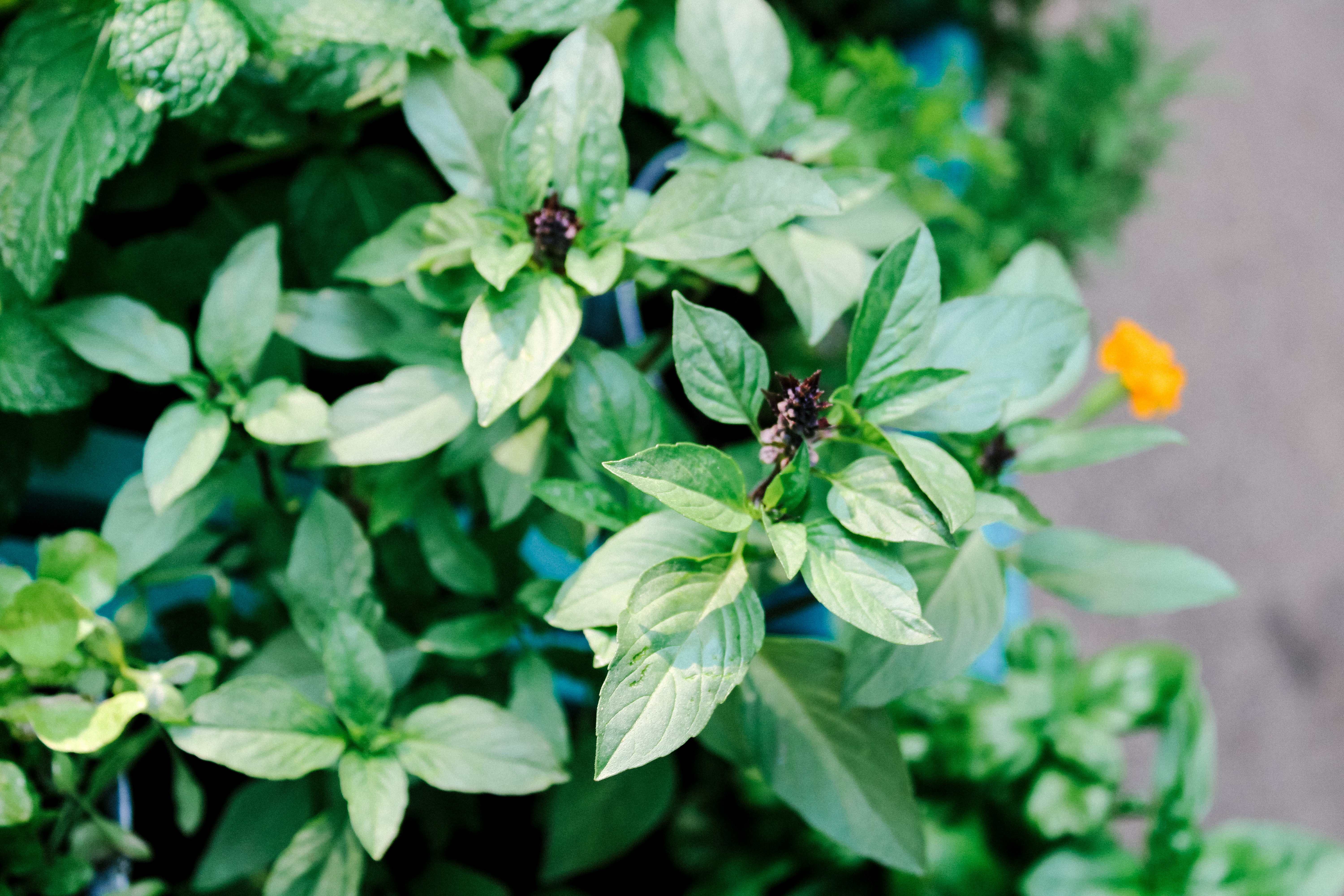
mint
Mint helps relive headache, bad breath, and common cold symptoms. This plant is very hearty and can thrive in partial shade or full sun. Plant these seeds in a raised planter (to allow room for growth without taking over a ground garden). Mint can be garnished over a bowl of fresh watermelon, infused with water or tea, eaten in soup, or mixed with yogurt. It is also used to clean your palette and help you easily switch from savory to sweet. After you are done eating a meal, use the mint to freshen your breath and it will get you prepared for desert.
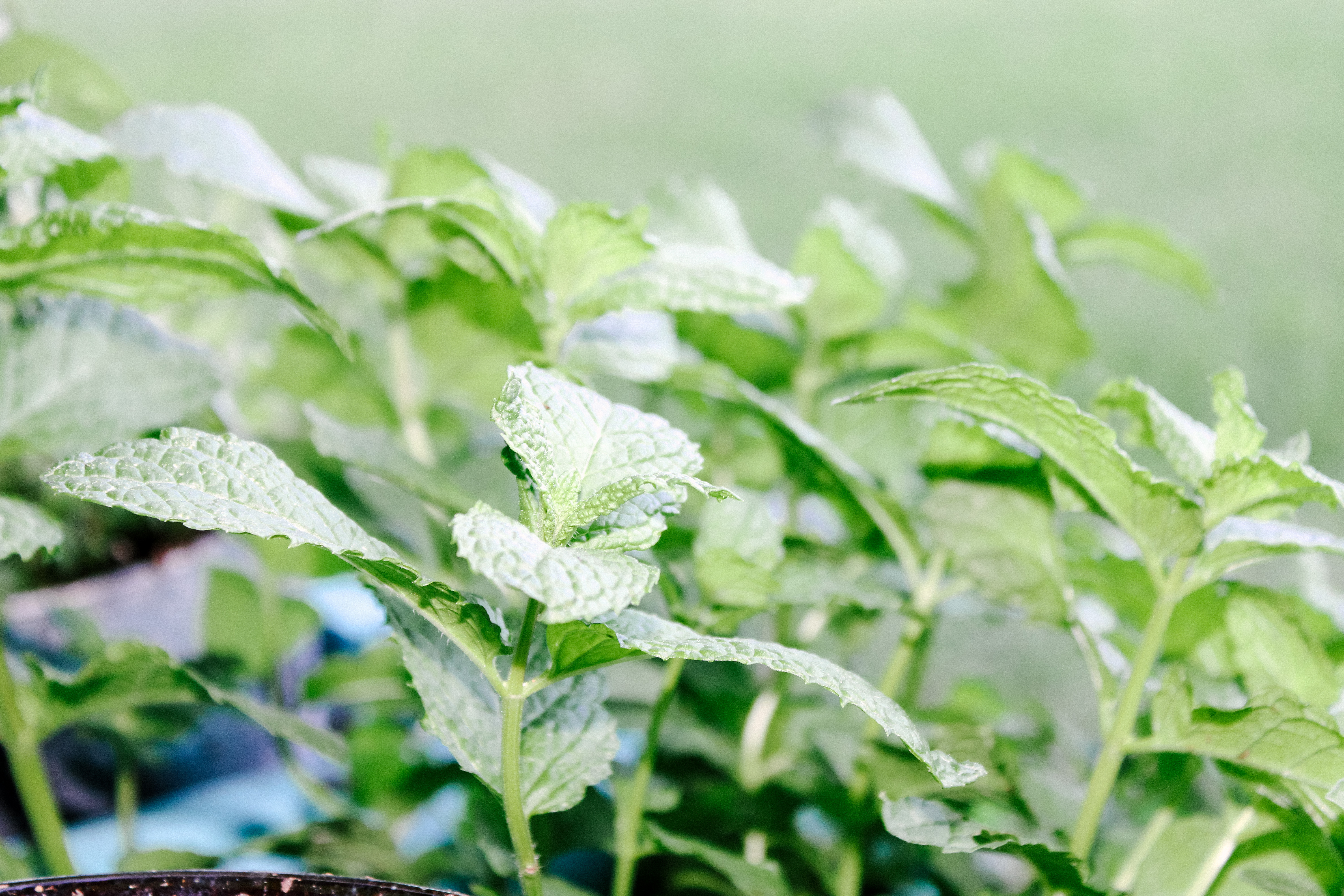
marjoram
This pretty plant reduces swelling and can help regulate menstrual cycles. Don’t use this herb if you are pregnant or breastfeeding. Plant these seeds just below the surface of the soil. Keep them in full sun and water frequently. Marjoram can be used for garnishing on soups, salads, and meat dishes.

rosemary
This herb has been shown to reduce anxiety, boost mood, and improve concentration and memory. It makes a really nice bush plant so it’s best to grow directly into the ground. Use a starter plant rather than a seed. Plant in full sun with plenty of room for it to spread. Water regularly. Place rosemary on lemon chicken, steak, and roast.
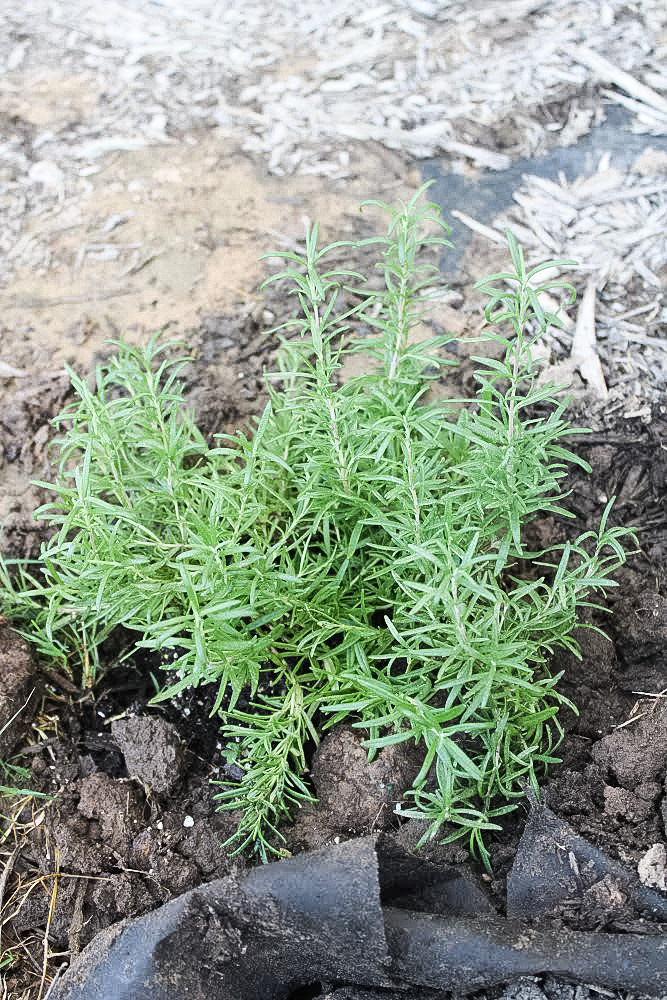
Each of these herbs should be grown inside of raised planter beds or hanging planters (except for rosemary).
This allows room for the plants to grow downward rather than side to side (where they would spread and take over the garden).
Begin the gardening process by keeping your planters indoors until the frost is gone. Make sure they face the East so that they get enough sunlight while indoors. After the frost is gone, take them outdoors and place them up on a stand or a window sill. When the temperature drops this fall, keep them indoors for year-round gardening.
Let me know your thoughts below – which herb are you planning on growing? Do you have any questions?
2 Comments
Comments are closed.

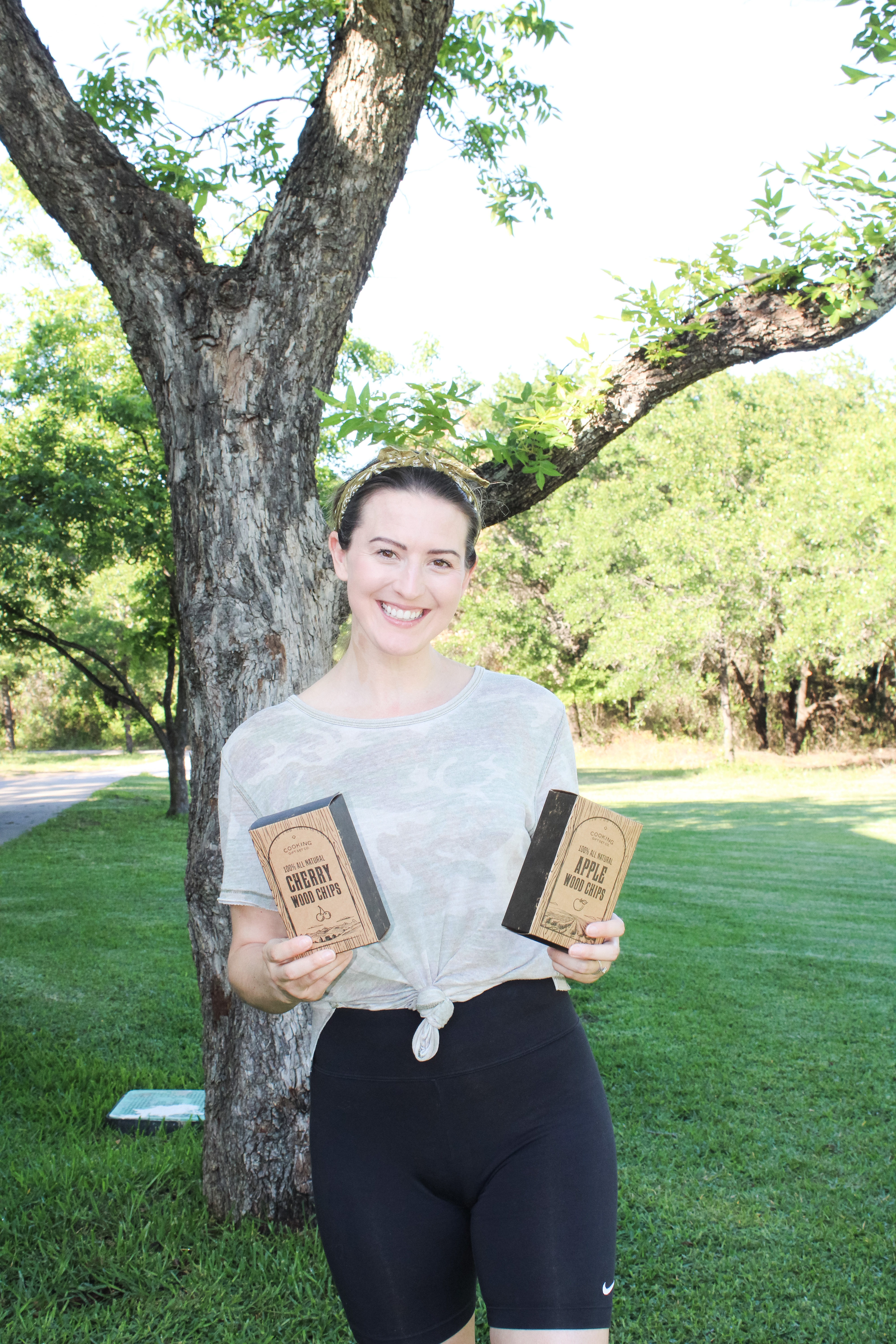 Recipes
Recipes
 Motherhood
Motherhood


Emily
Love herbs! Thanks for sharing!
VeiledFree
Me too, Emily – these were a few of the herbs my mother grew this year in her garden and I had to share! I grew cilantro, dill, basil and a few others and I love using them to cook with!